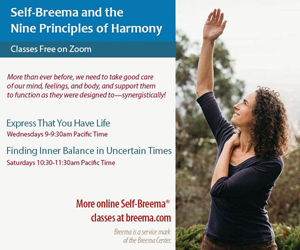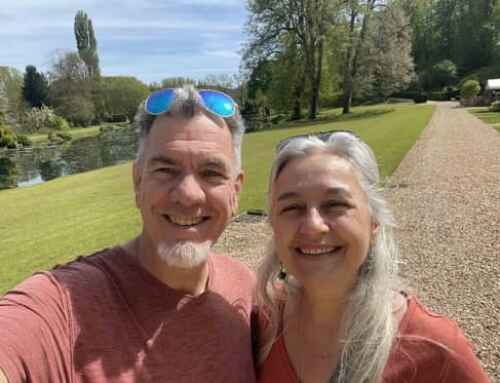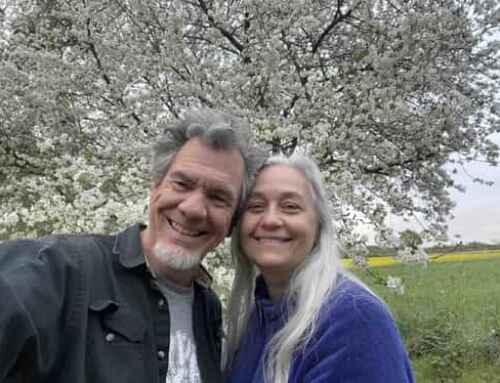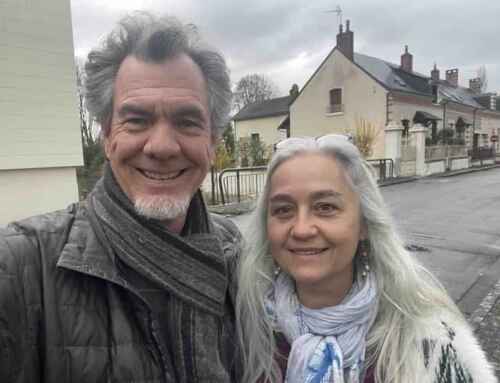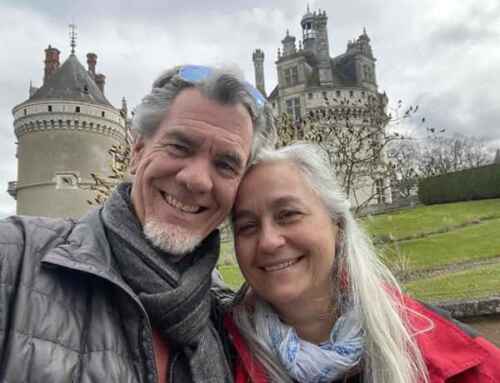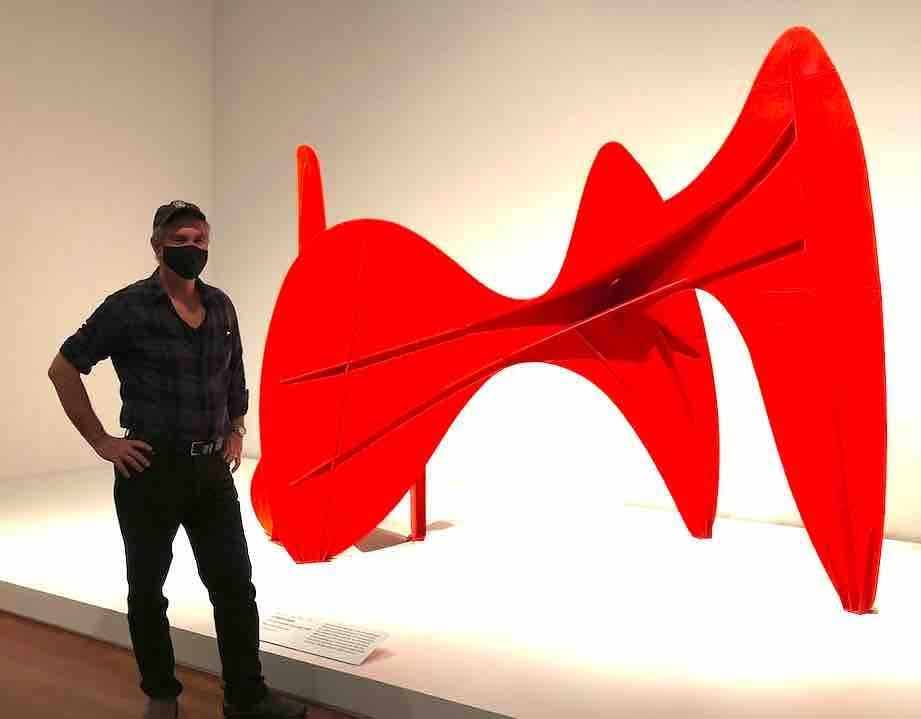
“ Just as one can compose colors, or forms, so one can compose motions.”
~ Alexander Calder
Have you ever heard of The Boho Dance? No, it’s not the latest conscious movement modality, far from it. We’re talking art, specifically the world of Modern Art in its 20th Century post-WW-I manifestation.
If you’re like me, you may have had moments where you were baffled by some of the works that have been proclaimed ‘masterpieces’ and have sold for astronomical amounts of money. Just what the heck are all those ‘isms’ that live under the umbrella of Modern Art anyway? Impressionism, Surrealism, Cubism, Minimalism… The list goes on.
Trying to get a handle on Modern Art has long been something like a Rubik’s Cube to me. No matter which way I twist and turn, there’s something elusive about a lot of it. “I just don’t get it!” Finally, like a ray of sun shining through the fog over Twin Peaks, I found myself with a copy of The Painted Word by Tom Wolfe and the clouds parted.
This sly and slender volume of a scant one-hundred-and-six pages manages to do for art what a telescope does for a ship’s captain. Wolfe zooms back and takes in the big picture in a way that can’t be disputed. Once you witness the truth, you can’t ‘unsee’ it. Of course, being as how it was published in 1975, decades before the advent of such things as Fire Art or the GIF, it leaves a few things to the imagination. One can only imagine the groans from the grave that such recent arrivals as the NFT (Non-Fungible Token) would elicit. ($2.9 million for Jack Dorsey’s first Tweet? You’ve got to be kidding!)
But anyway… I digress. What brings forth all this frothy art talk anyway? Well, in this past week I’ve been walking down parallel tracks in the land of art and it’s set my mind to spinning. On one hand, we did a back-to-back art-appreciation double-header, with one day firmly in the techno-future followed by a traditional museum-style ogling experience.
On the other hand, my concept for a larger-than-life cartoon caterpillar sculpture was chosen as one of eight that will be permanently featured in the Monarch Art Trail, a park dedicated to the majestic butterflies in the Florida Panhandle. (Yay!) The entire process of applying for and being accepted by the Cultural Arts Alliance of Walton County has put me smack dab in the middle of just how in the heck the art world works nowadays and how it is different from The Boho Dance that Wolfe so eloquently describes.
Thinking ahead way back in December, my sweetheart Isabelle gifted me with a pair of tickets to the Van Gogh Immersive Experience currently on tour in San Francisco. To get in the mood and fresh our memories we watched the unique hand-painted animated film ‘Loving Vincent‘ a few nights earlier. The immersion was unlike any art exhibition I’d seen before, with more in common with multi-media raves of the 90s or what I imagine the big psychedelic shows of the 60s must have been like, environmentally, at least.
The show is comprised of countless images of Van Gogh’s work blended and animated to morph on four giant walls and the floor, arranged in a way that mirrored the story of his tragic life, all set to evocative music. You sit still or wander, and the art is happening all around you. Whether his work represents how the world appeared to him or how he thought we should see it is an open question.
It spurred us to look longer and deeper at his work in a different setting, but then we’re two fully-grown folks with one foot in the analog world. I couldn’t help but question if younger folks would simply imbibe this high-tech modern mash-up of his work and say that they’d ‘done’ Van Gogh. Regardless, it was well-worth it and highly recommended.
The next day, we flipped the script entirely and idled away the afternoon inside the awe-inspiring De Young Museum in Golden Gate Park, quietly taking in the paired exhibit of sculptor and mobile-maven Alexander Calder and surrealist polymath Pablo Picasso, (did you know he was named Pablo Diego José Francisco de Paula Juan Nepomuceno Crispín Crispiniano María de los Remedios de la Santísima Trinidad Ruiz Picasso at birth? Now that’s a mouthful!). This is an old-school art-appreciation experience — you stroll among the work and ponder each piece as you go.
Back to Wolfe’s concept of The Boho Dance. Van Gogh existed before it ever got started, painting over 800 works in his eight years of activity and selling only one. Picasso, however, was the exemplar of the idea, successfully ‘double-tracking’ with one foot planted in the Bohemian aesthetic and the other happily hobnobbing with the cognoscenti while his works sold for vast sums, even during his lifetime.
The idea is that in art, unlike film, literature, or popular music, the general public has practically no role whatsoever in determining which creators make the big time. No, in the world of art, especially Modern Art in the 20th century and beyond, there is a relatively tiny community of critics, curators, and wealthy collectors concentrated in the cosmopolitan enclaves of New York, Paris, London, Miami, L.A., and a few other burgs who determine just who gets to be determined popular and thereby commands the stratospheric prices.
The ‘Dance’ refers to the game artists have had to play before and after being ‘discovered’. Until the curator community finds them, they have to labor away in obscurity, often in defiance of the elite. The curators and critics come across them in their forays into loft-land and christen them as The-Next-Big-Thing, after which they leap the divide and bask in the fame and fortune of the public eye, except that the ‘public’ has nothing to do with this until after the fact. (That is, if they are able to double-track and walk in both worlds.)
What I have discovered however, is that in the age of the internet the ground rules of the art game have shifted once again. While formerly you had to make it big with the critic and curator community and have successful exhibitions under your belt, now the opportunities to create public art are available online and you simply have to impress the decision-makers at a given organization with a winning idea and prove that you have a solid track record of completing large-scale works under your belt.
I see myself as a case-in-point. Having never ‘exhibited a collection’ of completed works in a gallery setting, I’m learning that the art of presenting a compelling proposal can get you in through the side door of the public art world. Somewhat akin to the grant-writing that non-profits do for funding, independent artists can jump to the front of the line with the aid of the internet.
If dear old Tom Wolfe were still alive today he might come up with a different name for this new dance. Meanwhile, let’s continue being thankful that all of the music and movement that’s baked into us as conscious dancers serves to keep the good old second-chakra creative-juices flowing!
Creatively yours, much love till next Monday!
M+
Mark Metz
Director of the Dance First Association
Publisher of Conscious Dancer Magazine

